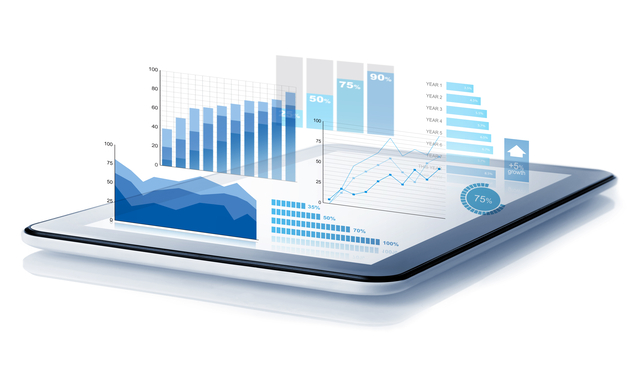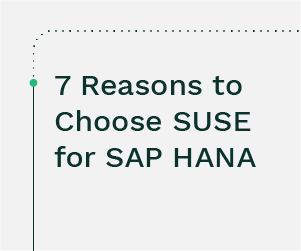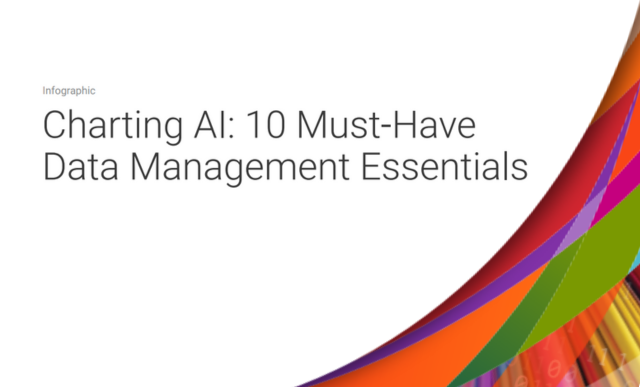Sales Order Processing and SAP ERP: Q&A on How to Accelerate Sales Cycles with an Automated System
Customer service representatives who dedicate too much time to manage paper-based data entry are limited in their ability to quickly respond to customers and resolve issues. Not to mention this costly method can lead to errors, missed orders and delays, as well as a lack of visibility into the business process.
What options are available to SAP customers looking to streamline and automate sales order entry? What best practices can eliminate high order processing costs, cut lead times, and increase customer satisfaction? Are cloud-based solutions the future?
During this one-hour chat, Howie Hahn of Esker answered readers’ questions on automating current sales order processes, integrating data with SAP ERP, migrating to the cloud, and more.
If you missed this live Q&A session or need a refresher, we welcome you to view the chat replay or read through the full, edited transcript below.
Meet the panelist:
 Howie Hahn, Senior Sales Engineer at Esker
Howie Hahn, Senior Sales Engineer at Esker
Howie has worked with Esker for 20 years. His first seven years were spent assisting customers within the Technical Support department before he transitioned into his current position as Senior Sales Engineer, managing the Sales Engineering department. He analyzes the business procedures of companies and determines the best solution for them to eliminate issues linked to paper-based processes.
Howie has a passion for the world of SAP and heads up internal Esker training for SAP processes. His expertise lies in accounts payable order processing automation for SAP ERPs. Howie also strives to assist companies with moving their on-premises infrastructures to the cloud.
Outside of the world of SAP and automat solutions, Howie enjoys taking long trips around the U.S. on his Harley. He owns a vineyard and enjoys brewing his own beer at home. Although a self-proclaimed “boring tech guy,” you won’t find a computer, Internet or cable television in his home.
Transcript:
Natalie Miller, SAPinsider: Hello! Welcome and thank you for joining us for today’s live Q&A on accelerating sales cycles with an automated system. I’m Natalie Miller, features editor of SAPinsider and insiderPROFILES, and I’m pleased to introduce today’s panelist, Howie Hahn of Esker.
Howie Hahn is a senior sales engineer at Esker who spends his days analyzing the business procedures of companies to determine the best solution for them to eliminate issues linked to paper-based processes. He has a passion for the world of SAP and heads up internal Esker training for SAP processes. His expertise lies in accounts payable order processing automation for SAP ERPs, and he also enjoys helping SAP customers move their on-premises infrastructures to the cloud.
Hi Howie, thank you for being here today!
Howie Hahn, Esker: Hello, I guess I’m ready for questions.
Comment from Jim: Who are some of the larger customers that have implemented your solutions? What business problems were solved, and what tangible results did they achieve? Have any automotive OEMS and/or suppliers implemented your solutions?
Howie Hahn: Esker has over 16,000 customers from all verticals and processes — everything from Whirlpool, Honeywell, and Moen, to Magnaflow and Allison Transmission, just to name a few. Companies come to us to solve all kinds of business problems, such as: reducing errors, wanting 100% visibility into their sales order processing, priority handling, or managing growth without hiring additional CSR’s. I listed a few customers in the automotive industry, but we also work with companies like Ford and Mercedes-Benz, to list a few more.
Comment from Guest: How important is master data management to effective sales order management?
Howie Hahn: Master data is always better if it’s perfect. But in the real world, almost every Esker customer has master data issues or discrepancies. Esker has some automation tools to red flag duplicates or missing data, and using Eskers Sales Order automation, we help filter and identify issues so they can be corrected. It’s easy for Esker because we are comparing live SAP data with extracted data from the order itself.
Comment from Dennis: Can 100% accuracy be achieved with an automated solution such as yours? Our CSR’s who manually enter orders are 99.3% accurate currently. We would like to implement an automated solution to speed order processing but are concerned with the reliance on OCR, which typically provides only 98% accuracy in the best of cases.
Howie Hahn: Just using OCR, no. When mixing other technologies with OCR, yes. Because of our tight integration with SAP, we can actually validate information and red flag errors or things that don’t make sense.
Comment from Guest: Is anyone using the customer interaction center for call receiving and automation purposes for sales order creation?
Howie Hahn: Not that I am aware of, but technically, this is possible. Using Esker for phone-in orders along with manual orders from email and fax can typically increase your efficiency by 65% and reduce your errors.
Comment from Guest: Does the solution supply the OCR, or are the readers sourced locally? There is quite of range of quality on OCR readers, and the system’s success rate will be governed by the OCR reader, right?
Howie Hahn: Esker embeds two OCR engines within its solution, and everything is included. Some languages do better with one engine or the other. Turning the order into text (OCR) is not the real magic, but extracting the correct data and validating it with SAP is where all the magic is. Esker always tries to validate the data it has to make sure it’s correct.
Comment from Guest: In the click-and-go scenario, are the orders passed to the CSRS in a FIFO kind of sequence?
Howie Hahn: That’s up to you, as you can prioritize based on SAP data or data that’s in the order itself. Or perhaps you want to red flag the priorities so they float to the top of the list; it’s up to you. Not only that, but this type of queue management is actually maintained at the business level, so the manager could wake up one day and decide to change how work is presented — and they don’t need to go to IT or Esker. They can change it on the fly. This is a business process, and Esker believes it should be managed by the business.
Comment from Guest: Does this solution only work with orders or other document types?
Howie Hahn: My favorite question so far. Actually, Esker automates the entire order to cash, procure to pay cycles. It’s one engine, one platform that automates any document coming into or out of your business, including documents like vendor invoices, outbound AR invoices, purchase requisitions, or PO’s for workflow, approvals, etc. If there is a business process, Esker has a prepackaged solution to help you automate and maintain the process.
Comment from Guest: What about infrastructures with multiple ERPs? Or does this solution only integrate with SAP ERP?
Howie Hahn: Ok, this is my favorite question. Esker has two paths, one that is tightly connected to SAP and another that works with all ERPs. In fact, it is common that through acquisitions, you might have smaller or older ERPs that you plan on bringing into SAP, but because of IT resources, that could be years away. The interface is identical for the SAP and the generic ERP version, so the transition will be seamless to the users. Esker also has tighter connections to other ERPs as well, so it would be a great conversation to have to discover the exact needs you have.
Comment from Guest: On average, or by order of magnitude, what level of acceleration are your customers seeing?
Howie Hahn: Like with all solutions, there is a ramp up. What we see is that typically, within two-to-three months, customers are experiencing a 45-65% efficiency gain just by automating with Esker. But when automating, it is also a good time to look at process improvement as well, which will usually extend this efficiency gain as well as reduce errors and increase both customer and CSR job satisfaction.
Comment from Guest: The main struggle for us is that our order volumes fluctuate depending on the time of the year. What are some best practices for this scenario?
Howie Hahn: That is a common issue that we see. Using the Esker Sales Order process will allow the efficiency gain for less people to process more orders. What most of our companies do is lend CSRs to other departments during the “off” periods or repurpose CSRs and only have them come back if needed. Because the Esker process eliminates key strokes, it actually has a very low learning curve, so bringing someone back is really easy. Job rotation is another benefit of a low learning curve, which is what some of our customers do during the low times.
Comment from Guest: What does the typical implementation project time and process look like? Is it all outsourced?
Howie Hahn: Esker has a huge professional services organization to implement and configure the sales order solution. Typically, it takes 2-3 months before go live and you sign off on the project. Because of our agile methodology, within 10 days you are in QA, using your documents connected to your QA SAP server using our foundation. The actual duration typically depends on your internal processes.
Natalie Miller: As we come to the end of today’s Q&A, I’d like to thank you all again for joining us. And a special thank you to Howie Hahn of Esker for being here to supply all these insightful answers!
Howie Hahn: Thank you everyone for your questions, and I hope that you contact Esker in the near future. If you would like to know more, go to www.Esker.com.
Customer service representatives who dedicate too much time to manage paper-based data entry are limited in their ability to quickly respond to customers and resolve issues. Not to mention this costly method can lead to errors, missed orders and delays, as well as a lack of visibility into the business process.
What options are available to SAP customers looking to streamline and automate sales order entry? What best practices can eliminate high order processing costs, cut lead times, and increase customer satisfaction? Are cloud-based solutions the future?
During this one-hour chat, Howie Hahn of Esker answered readers’ questions on automating current sales order processes, integrating data with SAP ERP, migrating to the cloud, and more.
If you missed this live Q&A session or need a refresher, we welcome you to view the chat replay or read through the full, edited transcript below.
Meet the panelist:
 Howie Hahn, Senior Sales Engineer at Esker
Howie Hahn, Senior Sales Engineer at Esker
Howie has worked with Esker for 20 years. His first seven years were spent assisting customers within the Technical Support department before he transitioned into his current position as Senior Sales Engineer, managing the Sales Engineering department. He analyzes the business procedures of companies and determines the best solution for them to eliminate issues linked to paper-based processes.
Howie has a passion for the world of SAP and heads up internal Esker training for SAP processes. His expertise lies in accounts payable order processing automation for SAP ERPs. Howie also strives to assist companies with moving their on-premises infrastructures to the cloud.
Outside of the world of SAP and automat solutions, Howie enjoys taking long trips around the U.S. on his Harley. He owns a vineyard and enjoys brewing his own beer at home. Although a self-proclaimed “boring tech guy,” you won’t find a computer, Internet or cable television in his home.
Transcript:
Natalie Miller, SAPinsider: Hello! Welcome and thank you for joining us for today’s live Q&A on accelerating sales cycles with an automated system. I’m Natalie Miller, features editor of SAPinsider and insiderPROFILES, and I’m pleased to introduce today’s panelist, Howie Hahn of Esker.
Howie Hahn is a senior sales engineer at Esker who spends his days analyzing the business procedures of companies to determine the best solution for them to eliminate issues linked to paper-based processes. He has a passion for the world of SAP and heads up internal Esker training for SAP processes. His expertise lies in accounts payable order processing automation for SAP ERPs, and he also enjoys helping SAP customers move their on-premises infrastructures to the cloud.
Hi Howie, thank you for being here today!
Howie Hahn, Esker: Hello, I guess I’m ready for questions.
Comment from Jim: Who are some of the larger customers that have implemented your solutions? What business problems were solved, and what tangible results did they achieve? Have any automotive OEMS and/or suppliers implemented your solutions?
Howie Hahn: Esker has over 16,000 customers from all verticals and processes — everything from Whirlpool, Honeywell, and Moen, to Magnaflow and Allison Transmission, just to name a few. Companies come to us to solve all kinds of business problems, such as: reducing errors, wanting 100% visibility into their sales order processing, priority handling, or managing growth without hiring additional CSR’s. I listed a few customers in the automotive industry, but we also work with companies like Ford and Mercedes-Benz, to list a few more.
Comment from Guest: How important is master data management to effective sales order management?
Howie Hahn: Master data is always better if it’s perfect. But in the real world, almost every Esker customer has master data issues or discrepancies. Esker has some automation tools to red flag duplicates or missing data, and using Eskers Sales Order automation, we help filter and identify issues so they can be corrected. It’s easy for Esker because we are comparing live SAP data with extracted data from the order itself.
Comment from Dennis: Can 100% accuracy be achieved with an automated solution such as yours? Our CSR’s who manually enter orders are 99.3% accurate currently. We would like to implement an automated solution to speed order processing but are concerned with the reliance on OCR, which typically provides only 98% accuracy in the best of cases.
Howie Hahn: Just using OCR, no. When mixing other technologies with OCR, yes. Because of our tight integration with SAP, we can actually validate information and red flag errors or things that don’t make sense.
Comment from Guest: Is anyone using the customer interaction center for call receiving and automation purposes for sales order creation?
Howie Hahn: Not that I am aware of, but technically, this is possible. Using Esker for phone-in orders along with manual orders from email and fax can typically increase your efficiency by 65% and reduce your errors.
Comment from Guest: Does the solution supply the OCR, or are the readers sourced locally? There is quite of range of quality on OCR readers, and the system’s success rate will be governed by the OCR reader, right?
Howie Hahn: Esker embeds two OCR engines within its solution, and everything is included. Some languages do better with one engine or the other. Turning the order into text (OCR) is not the real magic, but extracting the correct data and validating it with SAP is where all the magic is. Esker always tries to validate the data it has to make sure it’s correct.
Comment from Guest: In the click-and-go scenario, are the orders passed to the CSRS in a FIFO kind of sequence?
Howie Hahn: That’s up to you, as you can prioritize based on SAP data or data that’s in the order itself. Or perhaps you want to red flag the priorities so they float to the top of the list; it’s up to you. Not only that, but this type of queue management is actually maintained at the business level, so the manager could wake up one day and decide to change how work is presented — and they don’t need to go to IT or Esker. They can change it on the fly. This is a business process, and Esker believes it should be managed by the business.
Comment from Guest: Does this solution only work with orders or other document types?
Howie Hahn: My favorite question so far. Actually, Esker automates the entire order to cash, procure to pay cycles. It’s one engine, one platform that automates any document coming into or out of your business, including documents like vendor invoices, outbound AR invoices, purchase requisitions, or PO’s for workflow, approvals, etc. If there is a business process, Esker has a prepackaged solution to help you automate and maintain the process.
Comment from Guest: What about infrastructures with multiple ERPs? Or does this solution only integrate with SAP ERP?
Howie Hahn: Ok, this is my favorite question. Esker has two paths, one that is tightly connected to SAP and another that works with all ERPs. In fact, it is common that through acquisitions, you might have smaller or older ERPs that you plan on bringing into SAP, but because of IT resources, that could be years away. The interface is identical for the SAP and the generic ERP version, so the transition will be seamless to the users. Esker also has tighter connections to other ERPs as well, so it would be a great conversation to have to discover the exact needs you have.
Comment from Guest: On average, or by order of magnitude, what level of acceleration are your customers seeing?
Howie Hahn: Like with all solutions, there is a ramp up. What we see is that typically, within two-to-three months, customers are experiencing a 45-65% efficiency gain just by automating with Esker. But when automating, it is also a good time to look at process improvement as well, which will usually extend this efficiency gain as well as reduce errors and increase both customer and CSR job satisfaction.
Comment from Guest: The main struggle for us is that our order volumes fluctuate depending on the time of the year. What are some best practices for this scenario?
Howie Hahn: That is a common issue that we see. Using the Esker Sales Order process will allow the efficiency gain for less people to process more orders. What most of our companies do is lend CSRs to other departments during the “off” periods or repurpose CSRs and only have them come back if needed. Because the Esker process eliminates key strokes, it actually has a very low learning curve, so bringing someone back is really easy. Job rotation is another benefit of a low learning curve, which is what some of our customers do during the low times.
Comment from Guest: What does the typical implementation project time and process look like? Is it all outsourced?
Howie Hahn: Esker has a huge professional services organization to implement and configure the sales order solution. Typically, it takes 2-3 months before go live and you sign off on the project. Because of our agile methodology, within 10 days you are in QA, using your documents connected to your QA SAP server using our foundation. The actual duration typically depends on your internal processes.
Natalie Miller: As we come to the end of today’s Q&A, I’d like to thank you all again for joining us. And a special thank you to Howie Hahn of Esker for being here to supply all these insightful answers!
Howie Hahn: Thank you everyone for your questions, and I hope that you contact Esker in the near future. If you would like to know more, go to www.Esker.com.





